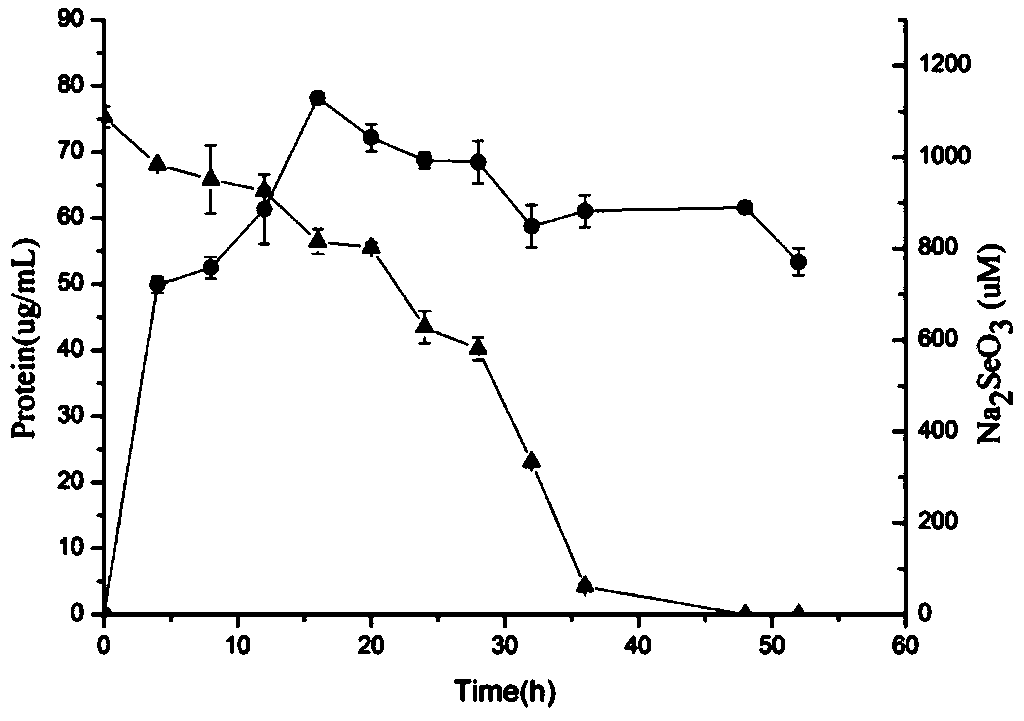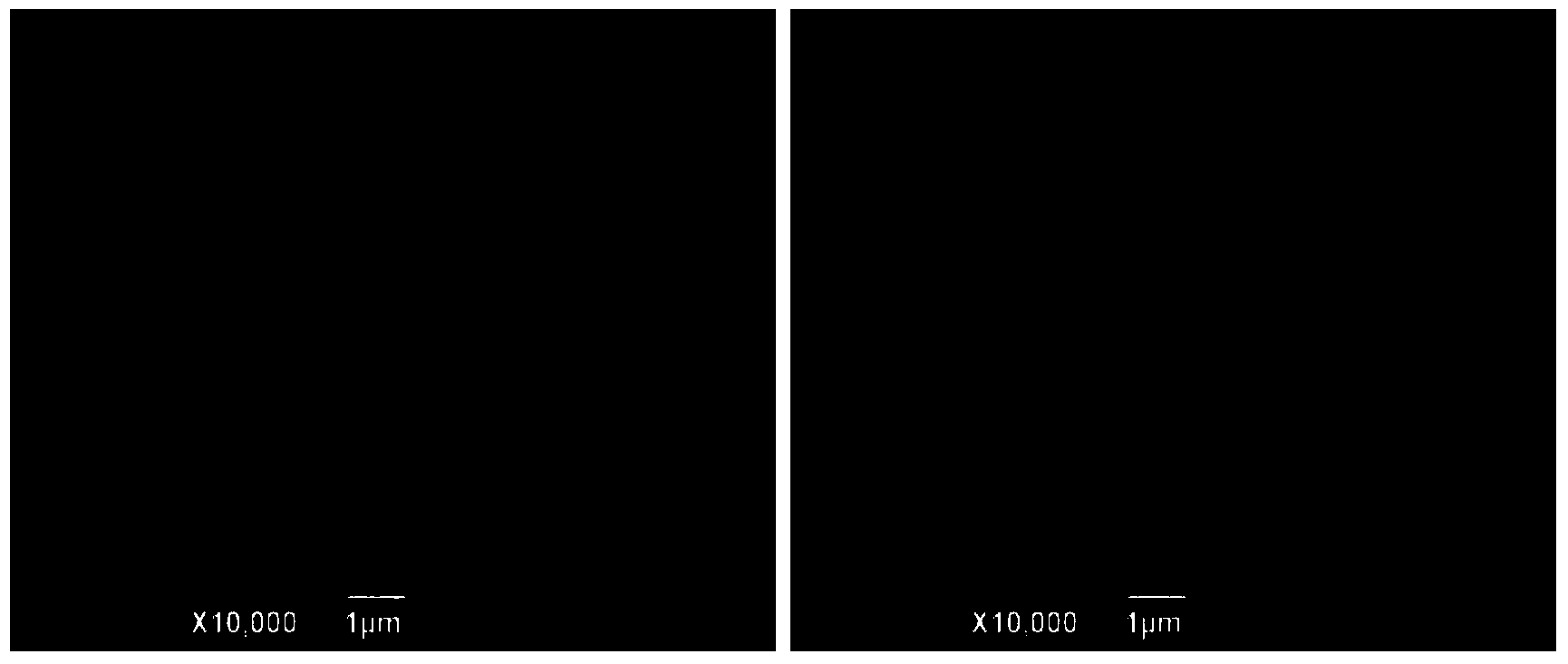Bacillus ES2-45 capable of reducing selenite to produce nano-selenium and application thereof
A bacillus and selenium-enriched technology, applied in the field of environmental microorganisms, can solve problems such as high toxicity, and achieve the effects of low cost, high anti-environmental viability, and environmental friendliness
- Summary
- Abstract
- Description
- Claims
- Application Information
AI Technical Summary
Problems solved by technology
Method used
Image
Examples
Embodiment 1
[0045] A kind of acquisition of selenite reducing bacterial strain ES2-45, its screening process is as follows:
[0046] A. Utilize the characteristic that the bacterial strain can reduce colorless selenite into red nano-selenium, thereby making the colony red. Sampling from a characteristic selenium ore soil in Enshi Autonomous Prefecture, Hubei Province, the "Selenium Capital of China", weighed 10g of ore soil solution In 90mL sterile water, gradually dilute to 10 -1 , 10 -2 up to 10 -5 Suspension, take the appropriate dilution and spread it on the ordinary solid bacterial culture medium 1 / 10TSB, add Na to the medium 2 SeO 3 The final concentration was 1 mmol / L, and cultured in a constant temperature incubator at 28°C for 7 days.
[0047] B. Select the reddened colony and streak it on a 1 / 10 TSB plate with a final selenite concentration of 1 mmol / L, confirm the reddened colony, record the morphology and store it.
[0048] C. Add 1mmol / L Na 2 SeO 3 The 1 / 10 TSB liquid ...
Embodiment 2
[0063] A fermentation method of selenite-reducing bacterial strain ES2-45, the steps of which are:
[0064] Connect a loop of bacteria from the activated plate into the liquid medium (1 / 10 TSB medium), cultivate it at 28°C and 160rpm for 24h, then inoculate it in 1 / 10TSB liquid medium according to the inoculum size of 5% to carry out expanded culture, 28 Cultivate at 160 rpm for 48 hours.
[0065] The formula of the 1 / 10 TSB liquid medium is: tryptone 1.5g / L, soybean peptone 0.5g / L, sodium chloride 0.5g / L, adjust the pH value to 7.3±0.2, sterilize at 115°C for 30min.
[0066] The formula of the culture medium of the plate is: add 1.5-2.0% agar to 1 / 10 TSB liquid culture medium.
Embodiment 3
[0068] Heavy Metal Resistance of Bacillus ES2-45
[0069] Collect the bacterial solution cultured for 24 hours, and spot 2 μL on 1 / 10 TSB agar plates containing different concentrations of different heavy metals by spotting, and observe its growth status. The concentration at which the strain does not grow is the MIC of the heavy metal. 45 has strong resistance to various heavy metals.
[0070] Table 2 Heavy Metal Resistance of Bacillus ES2-45
[0071]
PUM
 Login to View More
Login to View More Abstract
Description
Claims
Application Information
 Login to View More
Login to View More - R&D
- Intellectual Property
- Life Sciences
- Materials
- Tech Scout
- Unparalleled Data Quality
- Higher Quality Content
- 60% Fewer Hallucinations
Browse by: Latest US Patents, China's latest patents, Technical Efficacy Thesaurus, Application Domain, Technology Topic, Popular Technical Reports.
© 2025 PatSnap. All rights reserved.Legal|Privacy policy|Modern Slavery Act Transparency Statement|Sitemap|About US| Contact US: help@patsnap.com



